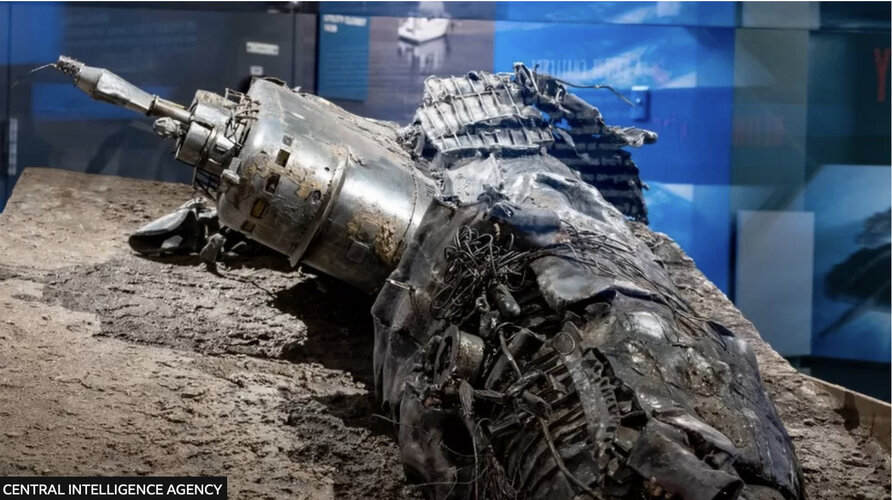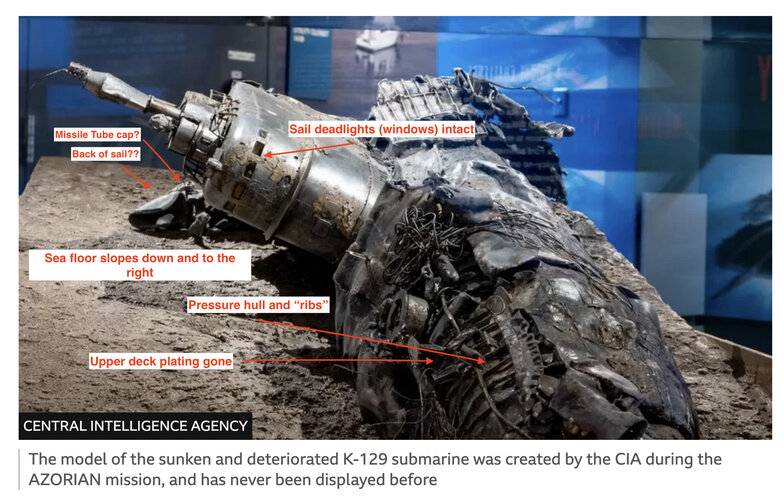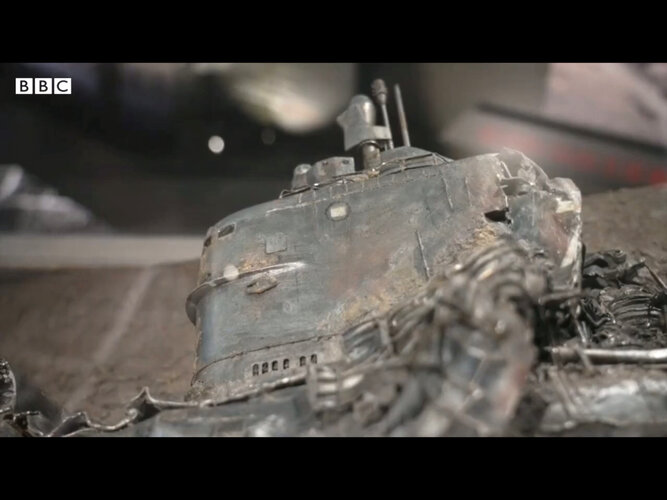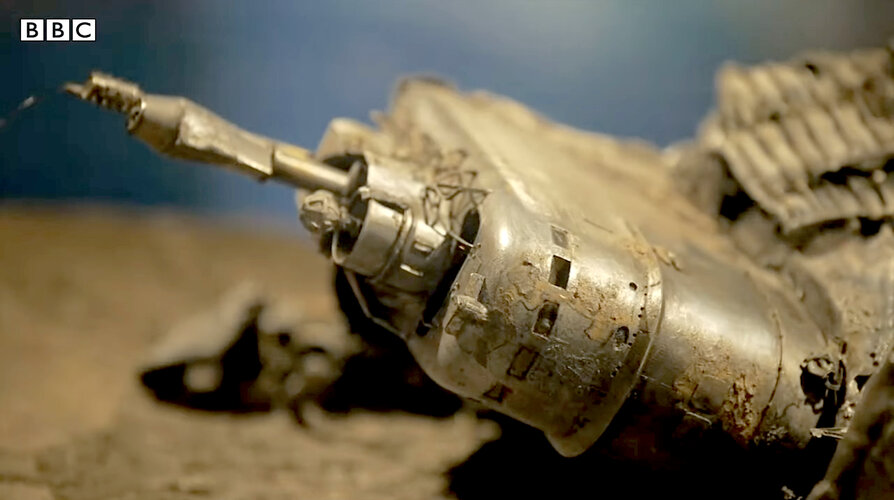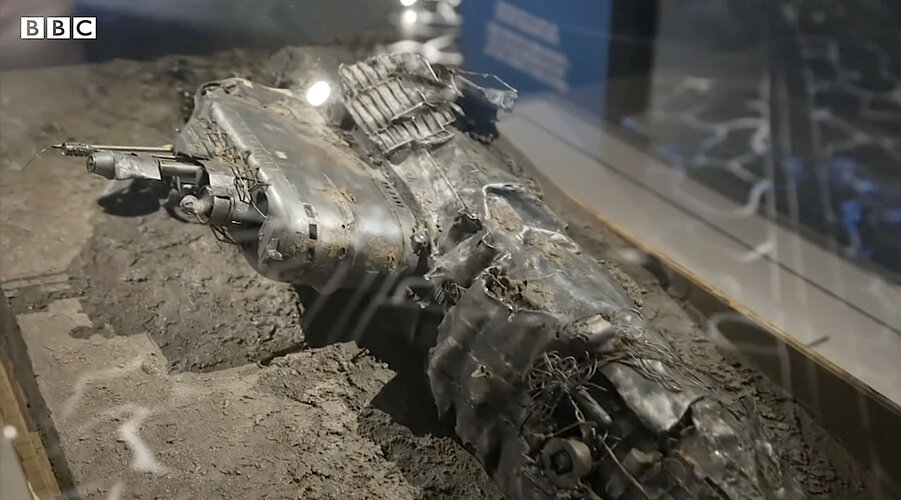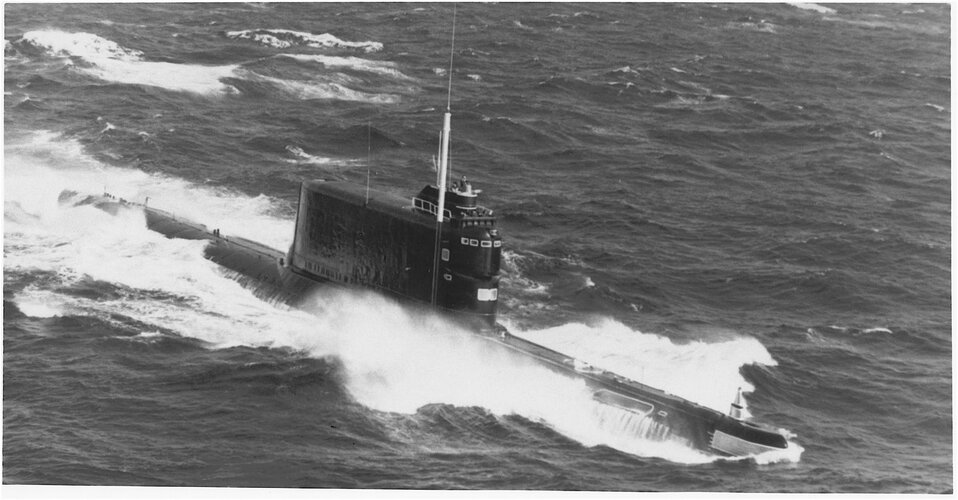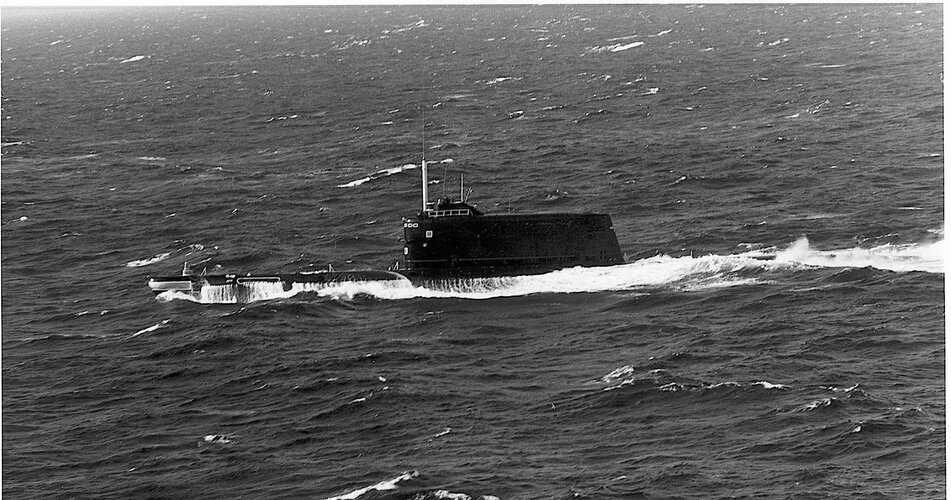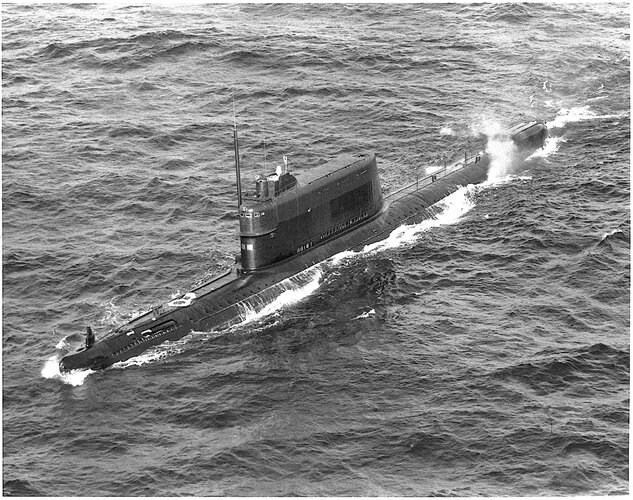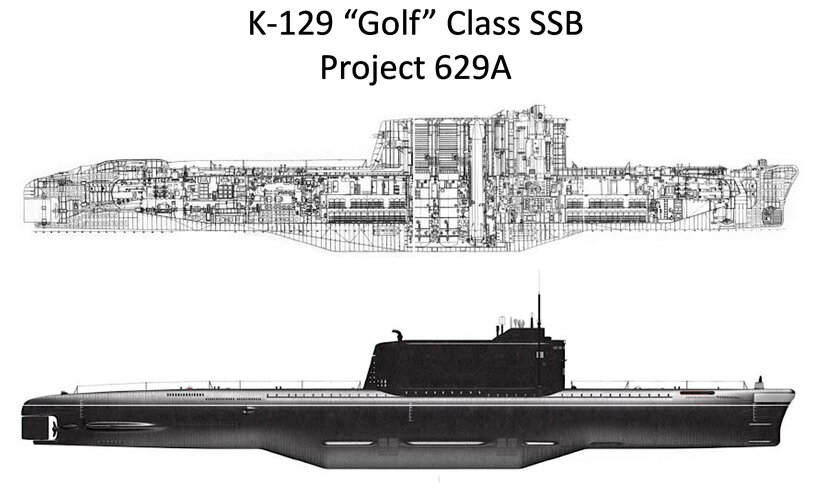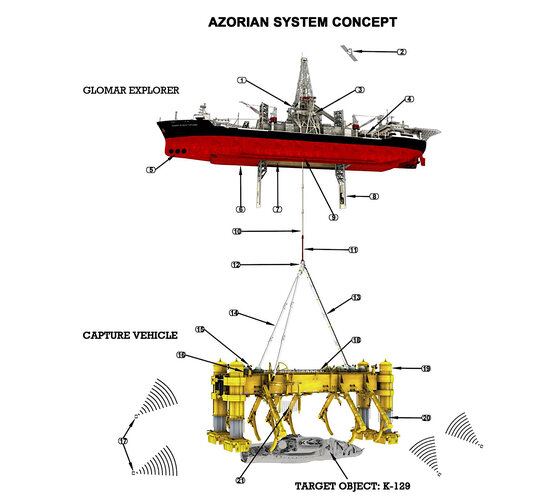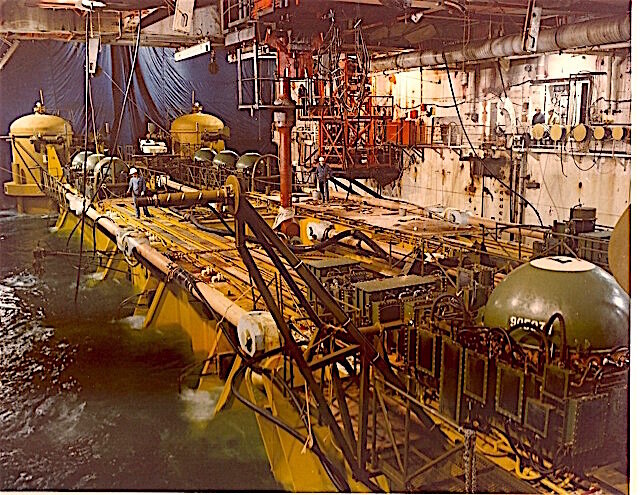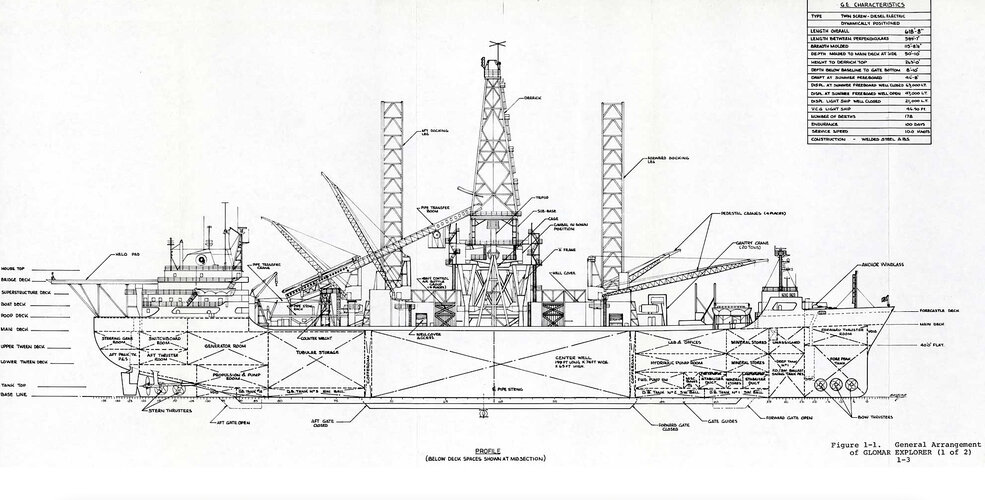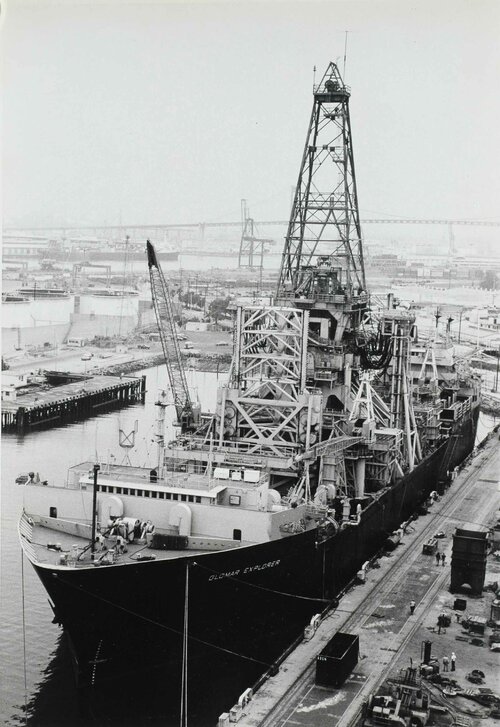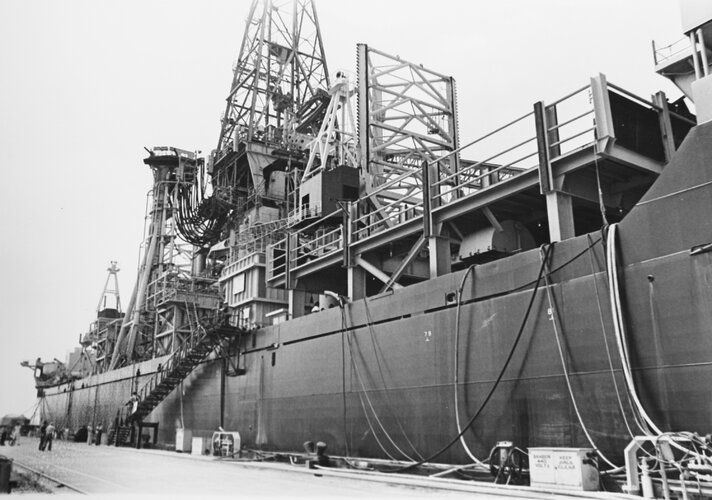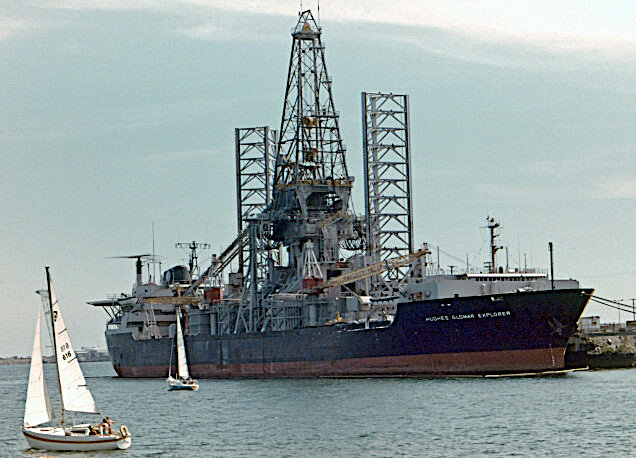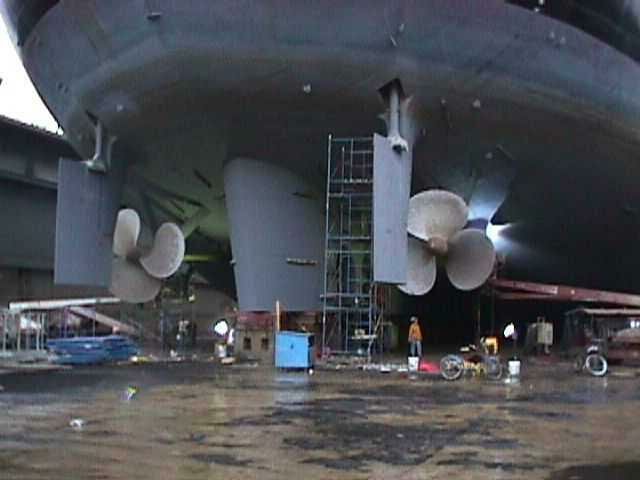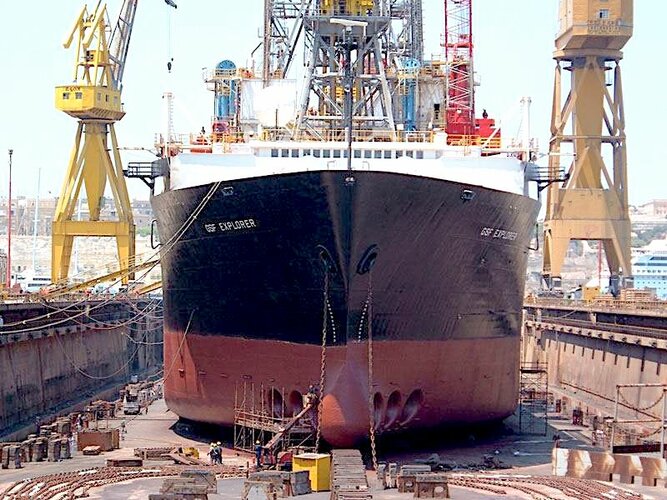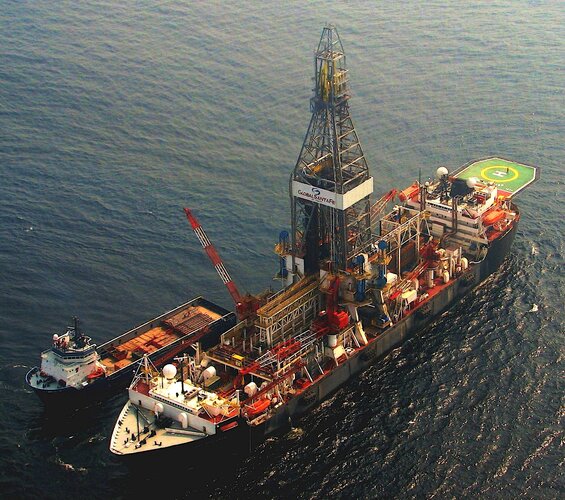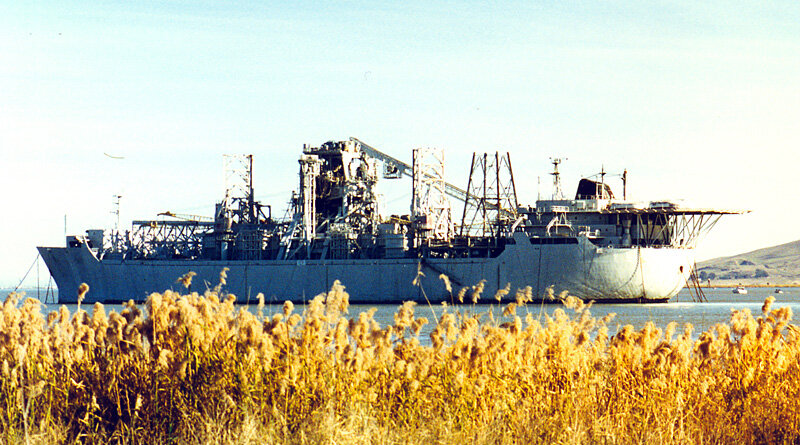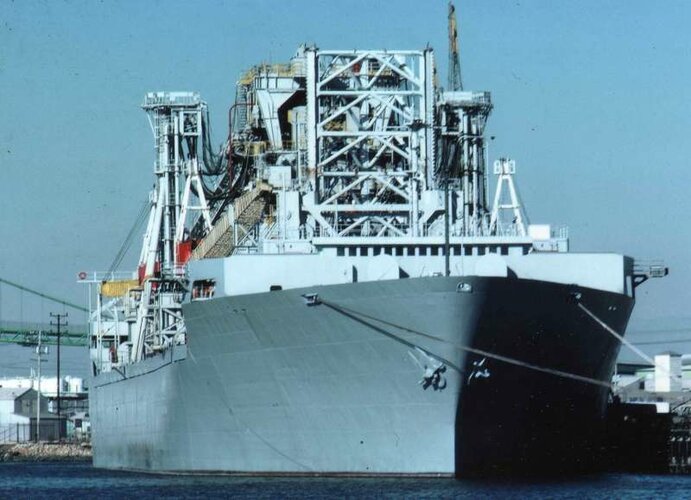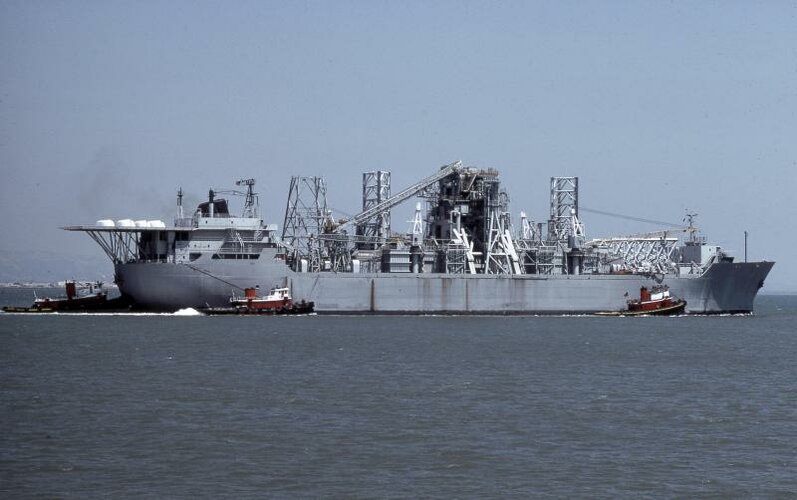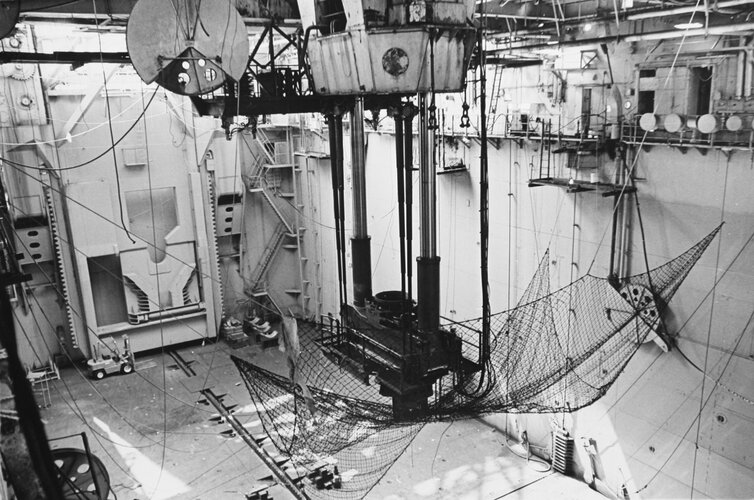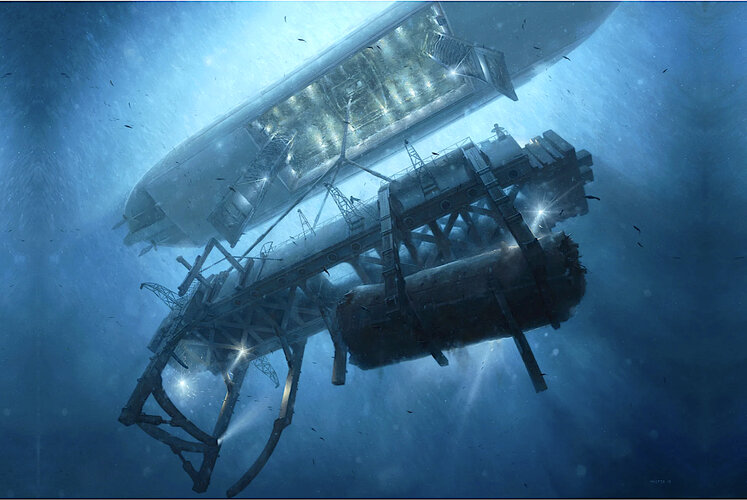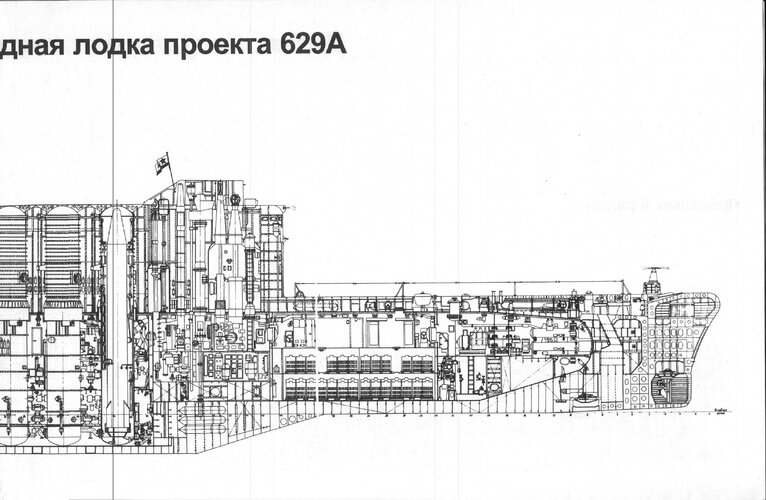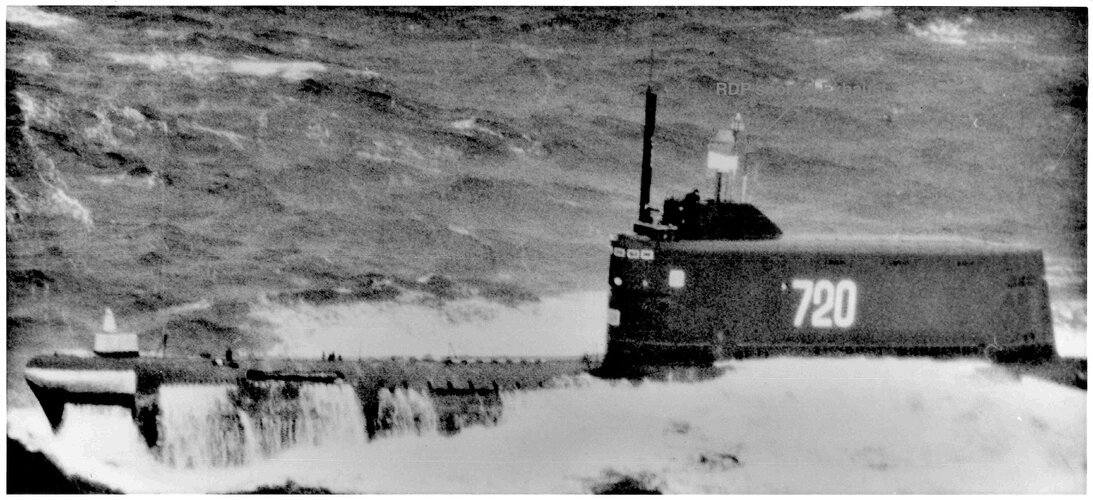One aspect that is often lost is that the very large moon pool, which had to accommodate the 200 foot long Capture Vehicle, had drawbacks. It was a very large area in the center of the ship (see photo and note the forklift for scale). It was found that operation in as increased sea state could be very dangerous. This is best described on pages 111-113 in Dave Sharp's book (
David Sharp CIA Book).
Briefly, during a test run in an increased sea state the bottom doors banged around in an uncontrolled fashions when opened, causing major vibrations throughout the entire ship structure. The bottom doors were 9 feet thick, with internal ballast tanks, almost built like barges. To open the doors, the ballast tanks were flooded and a gear system cranked the two doors along rails to fore and aft positions. To close, the doors were normally cranked shut, then the internal ballast tanks emptied so that the doors, which latched together, formed a tight seal around the perimeter. During the above incident, the doors banged around independent of each other and when finally closed, the seal and gear system was damaged. You also need to appreciate that the Glomar Explorer, having a large moon pool, did not have a standard keel support structure, and the two "wing walls" on either side of the moon pool had to act as structural elements. Also, because of the doors, the bottom had a huge flat structure, more like a barge than an ocean going vessel. This added to the difficulty in operating the ship safely. At one point, Dave also describes internal waves building in the moon pool. So there were significant limits imposed by sea conditions to operate the systems safely.
All this to say that it was a challenging ship to use, and considerable hard won experience was necessary. The ship was designed and built with a
single mission in mind: to recover the K-129 forward section for intelligence purposes. Same concept goes for the Capture Vehicle: it was specifically designed to engage in an exact fashion the K-129 target. These were NOT general purpose designs with an eye toward future uses.
In 1978,the Glomar Explorer was employed briefly (and ironically) in an ocean mining effort by a private company. They had a mining machine that occupied a small portion of the moon pool. Other than that, it sat for years in Suisan Bay, with the center derrick and docking legs largely removed (see photos). In 1996, an ocean oil drilling firm bough the Glomar Explorer and converted it to deep sea oil drilling. This entailed a major conversion and the moon pool was eliminated and the bottom doors replaced with permanent steel. A small, central opening remained for the drill system. See photos of the now renamed Global Santa Fe Explorer (
GSF Explorer). It's career ended in 2015 when it was broken up for scrap in China.

